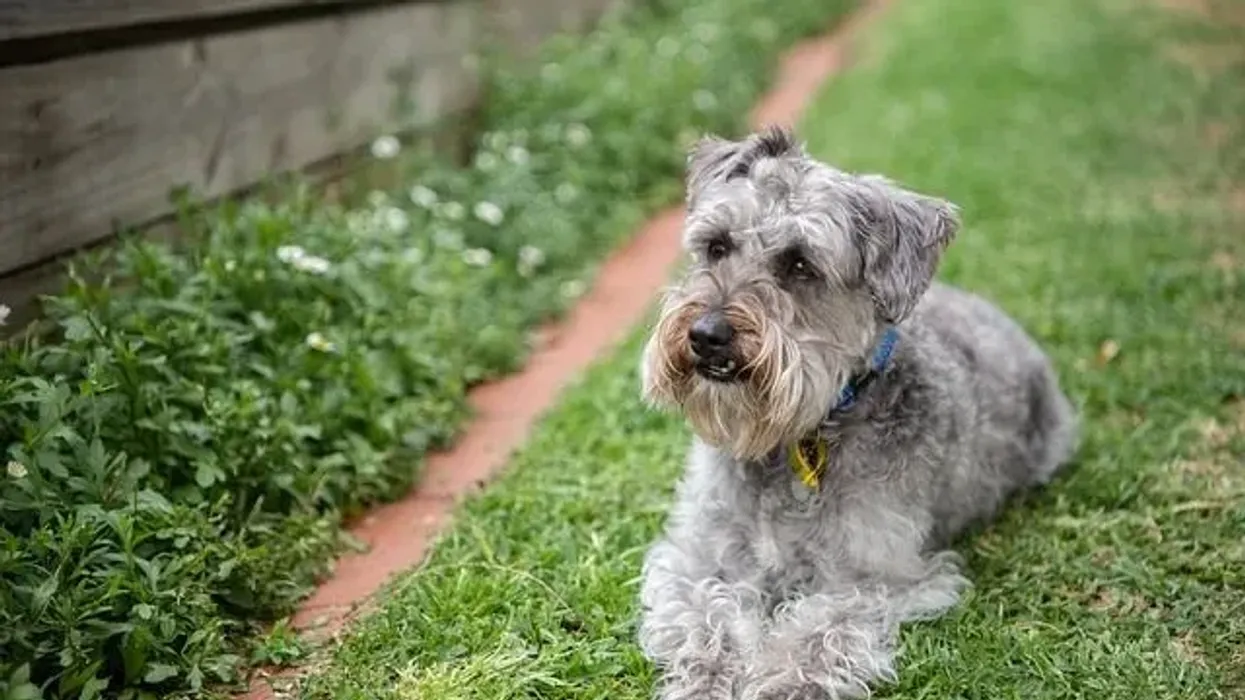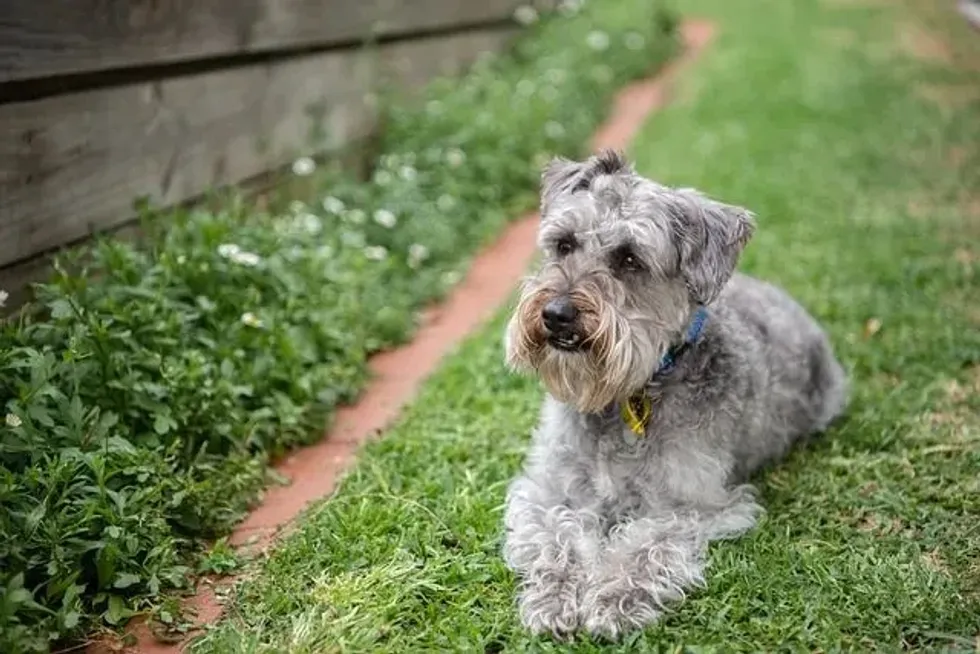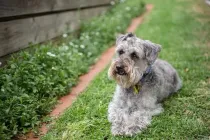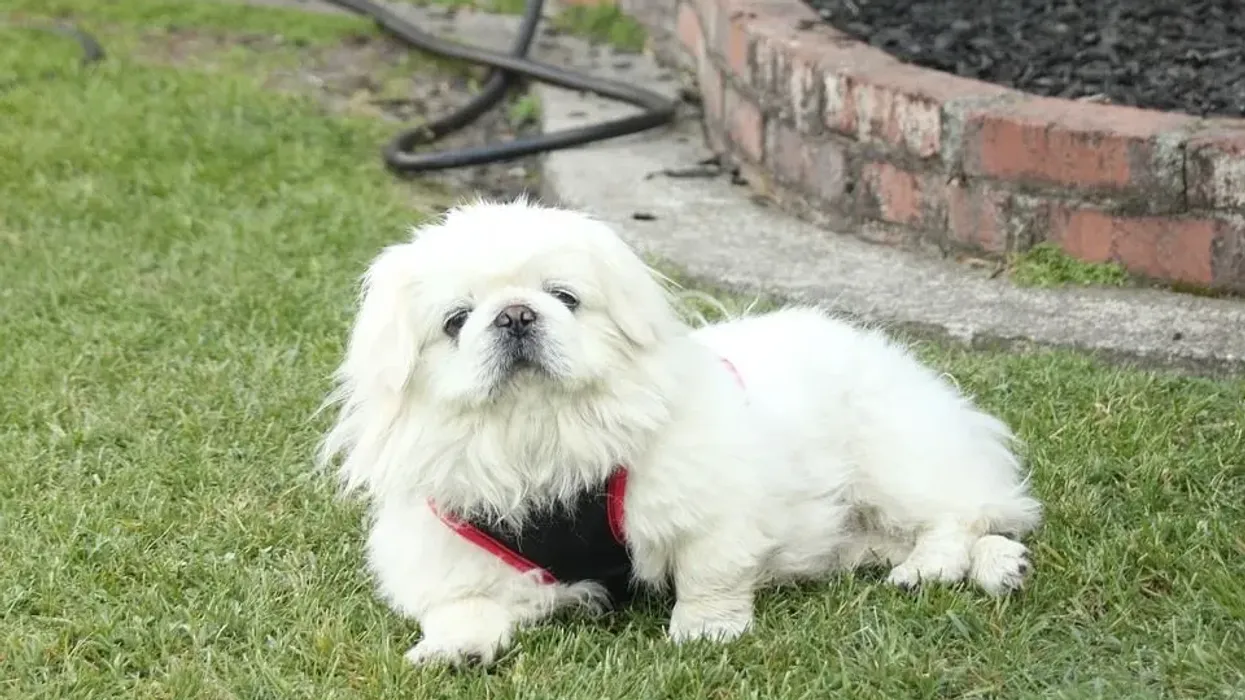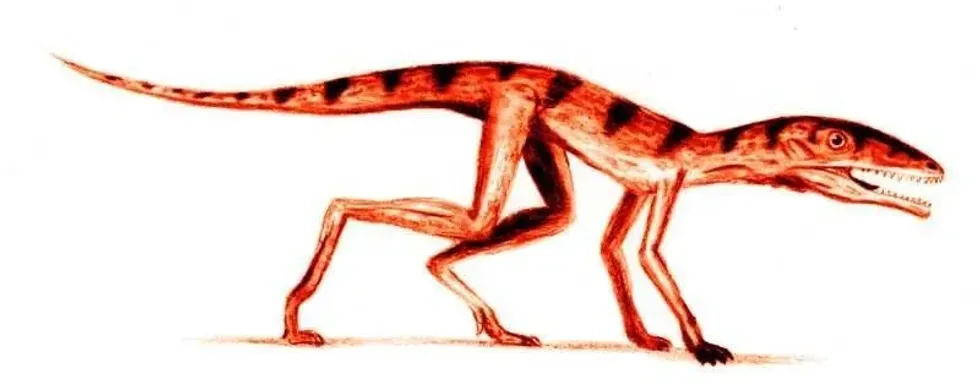Fun Schnoodle Facts For Kids
Content
- What type of animal is a Schnoodle?
- What class of animal does a Schnoodle belong to?
- How many Schnoodles are there in the world?
- Where does a Schnoodle live?
- What is a Schnoodle's habitat?
- Who do Schnoodles live with?
- How long does a Schnoodle live?
- How do they reproduce?
- What is their conservation status?
- What do Schnoodles look like?
- How cute are they?
- How do they communicate?
- How big is a Schnoodle?
- How fast can a Schnoodle run?
- How much does a Schnoodle weigh?
- What are their male and female names of the species?
- What would you call a baby Schnoodle?
- What do they eat?
- Are they slobbery?
- Would they make a good pet?
- Did you know...
- Characteristics and health issues
- Getting your own Schnoodle
Are you searching for a perfect dog for yourself? You are in the right place to know about a great dog called the Schnoodle.
Yes, they sound pretty familiar as the dog has been formed by breeding a Schnauzer and a Poodle. The breed might have existed on its own for a long time, but breeders started to produce more of them about two decades back.
Schnoodles are also known as the 'teddy bear' dog because of a similar appearance. Due to crossbreeding, the fur coat of a Schnoodle might come out in a surprise color.
Generally, they have short hairy fur in the color of silver, gray, black, and even auburn. All the good characteristics of a Schnauzer, as well as a Poodle, can be found in this dog.
They are friendly, intelligent, and fun-loving dogs with a perpetual happy face. These dogs come in four different variants: Toy Schnoodle, Miniature Schnoodle, Standard Schnoodle, and Giant Schnoodle.
The Schnauzer-Poodle mix has quickly become a favorite of many, even though the American Kennel Club hasn't updated any information about the breed. Schnoodles are great family dogs, and they have a huge affection level towards their owners.
Want to know more about the Miniature Schnoodle personality facts? Keep on reading this article on Schnoodle facts, to get acquainted with the breed. Also, check out our interesting articles about Glen of Imaal Terrier and Corgi German Shepherd Mix facts.
Schnoodle Interesting Facts
What type of animal is a Schnoodle?
A Schnoodle is a type of designer dog breed that has been produced by crossbreeding a Poodle dog and a Schnauzer dog.
What class of animal does a Schnoodle belong to?
A Schnoodle dog belongs to the class Mammalia and is from the family Canidae.
How many Schnoodles are there in the world?
No conclusive data can be found about the number of Schnoodles that inhabit the world. However, they are one of the most preferred dog breeds to be kept as pets because of their sweet and friendly temperament.
Where does a Schnoodle live?
A Schnoodle usually lives with its human parents and their families. Some Schnoodles may also live in dog or animal shelters before they find a loving home. As they are a Schnauzer and a Poodle mix, a Schnoodle cannot survive in the wild.
What is a Schnoodle's habitat?
Schnoodles have a reputation for always being happy. These teddy bear-like dogs need a comfortable and loving habitat from their human parents.
As a great family dog, Schnoodles also cohabit well with children and other dogs. The protective nature of Schnoodles also makes their families feel safe.
Schnoodles have a fairly high energy level, so they appreciate plenty of space around their habitat. It's great to have a big backyard where a Schnoodle can roam around and get their daily need of exercise.
The Schnoodle dog breed is also wanderlust in nature, so they love to go on long hiking or walking trips. Even though a Schnoodle dog has a fluffy and curly coat, it isn't suitable to live in extremely cold weather.
The dogs do relatively better in hot weather conditions. So, someone who is planning to get a Schnoodle may need to make heating arrangements if the temperature dips down too low.
One thing that a Schnoodle dog cannot stand is to remain alone for long durations. A Schnoodle puppy can adapt well to apartment living, but Giant Schnoodles may need a lot more space.
Who do Schnoodles live with?
The Schnoodles have been made by breeding the Schnauzer and Poodle dogs, so they were specially made to live with the humans. A Schnoodle loves its human parents and can live easily with children and other dogs.
It is quite easy to train a Schnoodle, so living with them is never a problem. As these small dogs can be quite protective, it is important to train them to socialize right from their puppyhood.
They do bark a little more, but that can be considered a plus point for those who want a bit more protection. One of the main reasons for making the Schnoodle mixed breed was to reduce the amount of shedding.
Hence, Schnoodles have a really low maintenance requirement when it comes to taking care of their coat or shedding. They are quite intelligent and have the ability to adapt to an environment fairly quickly.
How long does a Schnoodle live?
A Schnoodle can live up to 10-15 years on average. When these dogs get a loving and comfortable home environment along with enough food, they are quite happy.
Schnoodles can remain your friend for a decade or more, depending on their health. To increase the probability of a long lifespan, it is important to have frequent vet visits as Schnoodles are susceptible to some health issues like skin problems or Canine Hyperlipidemia.
How do they reproduce?
Schnoodles breed like most other dogs. These dog breeds go through a heat cycle twice a year that usually has a gap of six months.
It is usual for them to carry four to eight puppies in a single litter. The Giant Schnoodle may be able to carry more puppies because of their bigger size.
A Schnoodle is a mix of Schnauzers and Poodles, so they are cross-bred to get a similar result which may not be present when Schnoodles mate among themselves. The mixed breeding process is usually followed by certified breeders.
Different types of Schnoodles have been formed by breeding different variants of Schnauzer and Poodles. However, most common Schnoodles are either in the variants of toy or miniatures. The Giant Schnauzer was bred with a Standard Poodle to form the Giant Schnoodles that can grow quite large and heavy.
The common gestation period for domesticated dogs is 58–68 days. It's important to take care of a Schnoodle mommy to maintain their good health.
A Schnoodle puppy is born blind, but they quickly grow up to be just as cute as their parents. First-generation Schnoodles are often bred with either of their parent breeds to get more diverse mixed bred dogs.
What is their conservation status?
Not much data is available about the conservation status of Schnoodle dogs.
Schnoodle Fun Facts
What do Schnoodles look like?
A Schnoodle can be easily recognized by its fur coat which resembles that of a teddy bear. Though most Schnoodles are tiny, the Giant Schnoodles can be quite large and burly.
The color of the coat in a Schnoodle varies according to that of the parent breeds dog. But, a Schnoodle coat may come in colors like silver, gray, black, auburn, black and silver, black and white, red, white, and many more.
Schnoodles are produced by mix breeding the Poodles and Schnauzers, which helps them to inherit the cuteness of the parent breeds.
It also makes Schnoodles an almost non-shedding dog breed which is great for those who have allergies. Schnoodles with apricot coats are quite coveted, and this leads to them being bred with Poodles to get a richer red-colored dog.
Complicated breeding processes are followed to get a particular type of coat that dog owners tend to cherish. The hairy droopy ears and doll-like eyes make the Schnoodle puppies extra special.
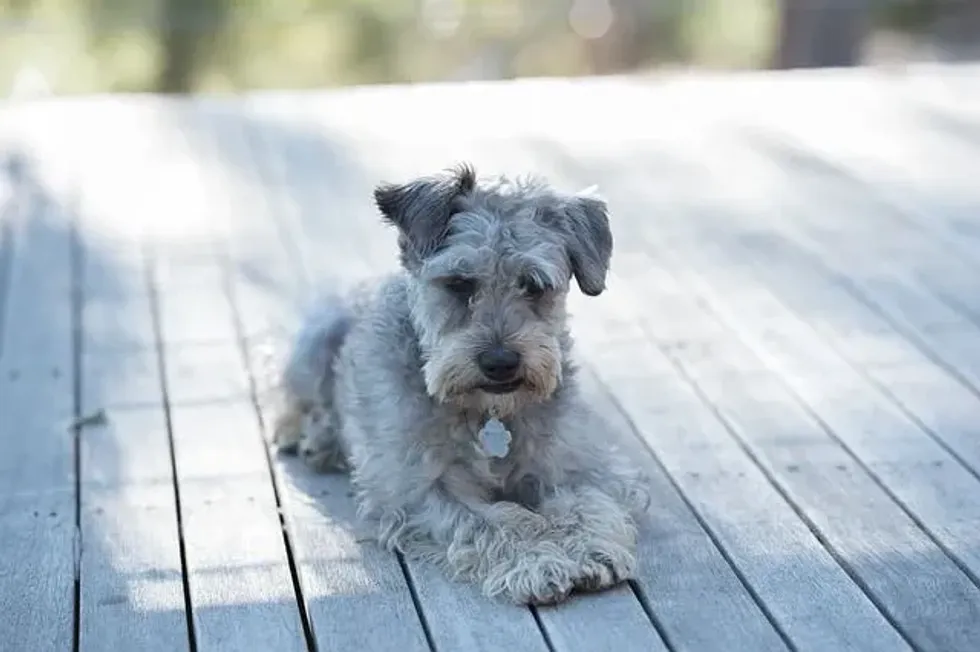
How cute are they?
A Schnoodle is very cute. Their teddy bear-like fur coat and innocent beady eyes make them stand out as a great dog breed.
A Schnoodle puppy is even cuter as it looks like a ball of yarn in its first few months. As a mixed breed dog, Schnoodles inherit the cuteness from its parents, the Poodle and the Schnauzer, which makes the mixed breed dogs extremely cute.
If you happen to meet a Miniature Schnoodle, it is very hard to control yourself from petting the adorable canine.
How do they communicate?
One of the Schnoodle dog facts that everyone should know is their love for barking. Schnoodles are very protective about their family, and they can be quite loud.
So, barking is their primary way of communicating with humans and fellow animals. Other than that, it is quite easy to train Schnoodles, so their human parents can teach them new ways of communication.
Schnoodles come to learn hundreds of commands if they are trained properly. Being a dog, a Schnoodle will also use scent and pheromones as a way to communicate with fellow dogs.
The scent is used to mark territory as well as to invite mates during mating seasons. Making a Schnoodle learn to socialize is extremely important to have a dog that can stand people and other animals.
How big is a Schnoodle?
The size of a Schnoodle dog varies according to its type.
There are generally four types of Schnoodle, the toy Schnoodle which has a height of 10-13 in (25-35 cm), the miniature Schnoodle with a height of 13-15 in (35-38 cm), a Standard Schnoodle standing at 15-19.5 in (38-50 cm) and the Giant Schnoodle that stands the tallest at 23-27.5 in (60-70 cm).
The size of a Schnoodle depends on the mixed breeding that has been done with the parent dogs.
The miniature Schnoodle is one of the most common Schnoodle variants available to us, and it is bred by cross-breeding a Miniature Schnauzer with a Miniature Poodle.
Compared to the standard Poodle height of 25 in or 45-60 cm, the miniature Schnoodles are up to 14 in or 25-35 cm tall. The size of Schnoodles can differ extensively due to the nature of mixed breeding.
How fast can a Schnoodle run?
Schnoodles are high-energy dogs who love to run around. They do have the potential to run as fast as the Poodle at 8 m/s or 48 km/h.
However, as they are mixed breed dogs coming from both Schnauzer and Poodles, one or the other gene might become dominant. Schnoodles either get the high activity level of a Poodle, or they may be more adventurous like a Schnauzer.
How much does a Schnoodle weigh?
The weight of a Schnoodle depends upon its variant. When a standard Poodle is bred with a Giant Schnauzer, it may give birth to a Giant Schnoodle that can weigh up to 85 lb or 38 kg. Due to the variety in their size, the average weight of the breed can fluctuate between 4-85 lb or 2-38 kg.
What are their male and female names of the species?
A male Schnoodle is called a dog and a female Schnoodle is called a bitch.
What would you call a baby Schnoodle?
A baby Schnoodle is called a puppy.
What do they eat?
Schnoodle dogs need to have the right quantity of food according to their body weight. Small dogs will require less food compared to that larger variants.
The standard Schnoodle eats about 3/4-1 cup of dry dog food in a day. However, the measurement should be decided after consulting with a veterinary doctor.
Schnoodles also like to eat meat, chicken, beef, and other kinds of protein that help them to build good muscles. It is always recommended to feed them the highest quality food to avoid health problems and low energy. It's better to feed a dog twice a day rather than to leave their food out in the open.
Just like their parents Schnauzers and Poodles, a Schnoodle also has a tendency to gain weight. So, keeping tight control of their food as well as maintaining a proper exercise routine helps in keeping them in shape.
Are they slobbery?
Yes, just like their parents, a Schnoodle is known for being slobbery. So, pet parents should keep themselves ready with tissues to clean up their drool. Remember to give the Schnoodles enough water to keep them hydrated.
Would they make a good pet?
Schnoodles are born out of a mix between a Schnauzer and a Poodle. Both dogs have been popular around the world for their personality, intelligence, and appearance.
They were specifically cross-bred to achieve a dog that will have a controlled temperament along with a nice look. Most of the Schnoodle dogs have a manageable size as they are a Schnauzer and Poodle mix.
The breed is also known for its friendly nature, which they maintain with humans and other animals. They are also quite playful and lead an active life.
People who have never had a pet can easily manage a Schnoodle. Ones that come from breeding Miniature Schnauzer and a Miniature Poodle only grow up to 15 in tall, so they can be good buddies with children.
The most attractive part of the breed has to be a Schnoodle's coat which comes in a lot of variations. Moreover, they only need a bath twice a month as shedding is quite low in the breed.
The trainability of Schnoodles is high, and they should be taught proper socialization right from their childhood. If you opt for the small breed, they may also be relatively less costly.
Did you know...
Schnoodle dogs are often marketed or promoted as being hypoallergenic because of their low shedding. However, no dog has the ability to be completely hypoallergenic as allergy is generally triggered by the dander (dead skin cells) of a dog.
So, a person who is planning to buy a dog should spend some time with a puppy before taking the risk of bringing them home.
Schnoodles do something known as 'butt tucking' when they are super excited. This involves them putting their backside closer to the ground while keeping their pelvis tucked, and in that position, they run at a zooming speed.
Schnoodles like to dig like a Schnauzer because of the presence of their Terrier gene.
A dog parent needs to brush the coat of a Schnoodle twice a week to keep it clean and knot-free. Also, regular grooming is required to remove excess hair from the eye area.
Characteristics and health issues
The common characteristic shared by all Schnoodle is their fun-loving nature. The Schnauzer and Poodle mix loves to play and interact with their fellow humans.
One of the Giant Schnoodle facts is that in the case of a crossbred dog, their personality is less predictable and depends more on the genes. However, seldom does a Schnoodle behave aggressively. They do bark in case of perceived threat, but they won't attack anyone.
There are some common health problems faced by Schnoodles, including Progressive Retinal Atrophy (affects their eyes), obesity, diabetes, Patellar Luxation (a problem in knee caps especially seen in the small breeds), elbow dysplasia, as well as liver and heart disorders. Following a healthy exercise routine and maintaining a proper diet is important for the well-being of the Schnauzer-Poodle mix.
Talk with a veterinary physician to know more about the health problems seen in a Schnoodle.
Getting your own Schnoodle
Have you been meaning to bring a new member into your family? A Schnoodle is a great candidate for being a family pet.
A Schnoodle dog can set you back by $500 to over $3,000, depending on their variant and rarity. A Schnoodle's coat is often the deciding factor behind their cost.
However, this friendly and happy dog will always accompany you and keep you happy. If you are lucky, you can even find a Schnoodle at a rescue center.
One of the interesting Schnoodle facts is their low dander production which makes people categorize them as a non-shedding variant. The breed of Poodle and Schnauzer mix is perfect for those who want a dog of calm temperament that has a cuddly and affectionate personality.
Here at Kidadl, we have carefully created lots of interesting family-friendly animal facts for everyone to discover! Learn more about some other mammals including Shih Poo, or Beabull.
You can even occupy yourself at home by drawing one on our Schnoodle coloring pages.
We Want Your Photos!
More for You
See All
Bachelor of Arts specializing in Journalism and Mass Communication, Postgraduate Diploma in Sports Management

Moumita DuttaBachelor of Arts specializing in Journalism and Mass Communication, Postgraduate Diploma in Sports Management
A content writer and editor with a passion for sports, Moumita has honed her skills in producing compelling match reports and stories about sporting heroes. She holds a degree in Journalism and Mass Communication from the Indian Institute of Social Welfare and Business Management, Calcutta University, alongside a postgraduate diploma in Sports Management.
Disclaimer
1) Kidadl is independent and to make our service free to you the reader we are supported by advertising. We hope you love our recommendations for products and services! What we suggest is selected independently by the Kidadl team. If you purchase using the Buy Now button we may earn a small commission. This does not influence our choices. Prices are correct and items are available at the time the article was published but we cannot guarantee that on the time of reading. Please note that Kidadl is a participant in the Amazon Services LLC Associates Program, an affiliate advertising program designed to provide a means for sites to earn advertising fees by advertising and linking to Amazon. We also link to other websites, but are not responsible for their content.
2) At Kidadl, we strive to recommend the very best activities and events. We will always aim to give you accurate information at the date of publication - however, information does change, so it’s important you do your own research, double-check and make the decision that is right for your family. We recognise that not all activities and ideas are appropriate for all children and families or in all circumstances. Our recommended activities are based on age but these are a guide. We recommend that these ideas are used as inspiration, that ideas are undertaken with appropriate adult supervision, and that each adult uses their own discretion and knowledge of their children to consider the safety and suitability. Kidadl cannot accept liability for the execution of these ideas, and parental supervision is advised at all times, as safety is paramount. Anyone using the information provided by Kidadl does so at their own risk and we can not accept liability if things go wrong.
3) Because we are an educational resource, we have quotes and facts about a range of historical and modern figures. We do not endorse the actions of or rhetoric of all the people included in these collections, but we think they are important for growing minds to learn about under the guidance of parents or guardians.
